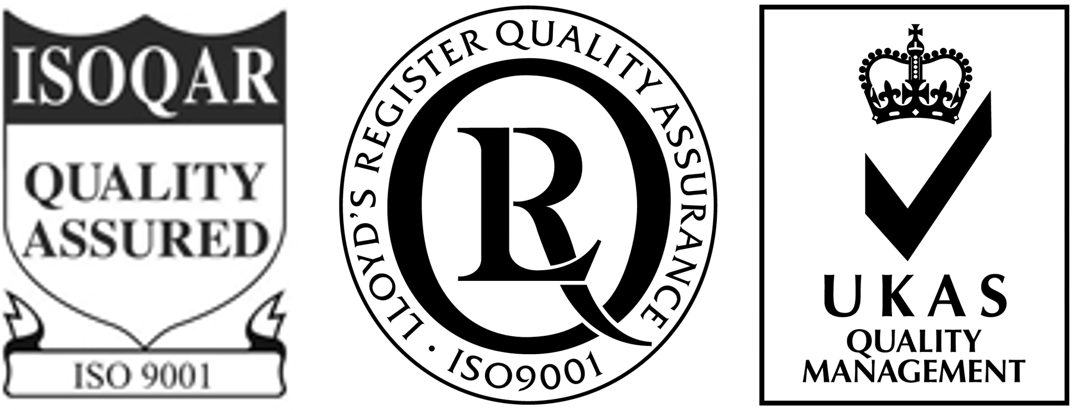- BioVector NTCC典型培养物保藏中心
- 联系人:Dr.Xu, Biovector NTCC Inc.
电话:400-800-2947 工作QQ:1843439339 (微信同号)
邮件:Biovector@163.com
手机:18901268599
地址:北京
- 已注册
HepaRG cell line
BioVector NTCC质粒载体菌种细胞蛋白抗体基因保藏中心www.biovector.net
Background
HepaRG™ cells are a human hepatic progenitor cell line that retains many characteristics of primary human
hepatocytes. HepaRG™ cells are terminally differentiated and provided in a convenient cryopreserved format.
For scientists who need reproducible metabolism data, HepaRG™ cells are an in vitro tool that provides
reproducible results in a metabolically complete and scalable system.
This description and user guide for the thawing and culture of cryopreserved HepaRG™ cells includes three
sections:
Section 1: Recommended materials, media and cells
Section 2: Protocol for the thawing, seeding and maintenance of HepaRG™ cells
Section 3: Cell morphology
Section 1: Materials, media and cells
Materials
Water bath at +37° C
Laminar flow hood
Pipet-aid, pipettes and micropipettes
Multichannel pipettes and repeater pipette
Polystyrene round-bottom tubes (40mL) and petri dishes (92 x 17 mm) or similar containers
Incubator at +37° C with a 5%/95% CO2/O2 atmosphere and 100% relative humidity
Phase-contrast microscope
Material for cell count (cell counting chamber, coverslips, 0.05% Trypan blue solution)
Media supplements
Working medium is prepared by adding the HepaRG™ Supplement to 100 ml/500 ml of Williams’
Medium E and 1ml/5ml of GlutaMAX-I.
Cells
Immediately place the cryovial(s) in liquid nitrogen upon receipt.
Section 2: Protocol
Note: Observe universal precautions when handling HepaRG™ cells and treat all biologic material as
potentially infectious.
The following steps must be performed under a laminar flow hood.
Biovector NTCC, Inc
No.19,Xizhimen,Beijing,China
http://www.Biovector.net
Tel:010-53513060. 400-800-2947
1. Medium preparation
Base Medium consists of 99mL of Williams’ Medium E combined with 1 mL of GlutaMAX™ I
Thaw the HepaRG™ Supplement by placing the bottle in a +37°C water bath until completely thawed.
Prepare the HepaRG™ working medium by adding the entire contents of the bottle of supplement to
100 mL of Base Medium.
The HepaRG™ working medium is now ready for use. It should be stored at +4°C for a maximum of
one month.
Note: If completing less than 500 mL of media, see Section 4: Media volume tables at the end of the protocol
for exact amount of supplement.
2. Thawing and counting of cryopreserved, HepaRG™ Cells (Day 0)
2.1. Thawing
Pre-warm working HepaRG™ Thaw, Plate, & General Purpose Working Medium in a +37°C water
bath.
Pipet 9 mL (per HepaRG™ cryovial to be used) of pre-warmed HepaRG™ Thaw, Plate, & General
Purpose Working Medium into a sterile 40mL polystyrene round-bottom tube or similar container.
Prepare an absorbent paper with 70 % ethyl alcohol.
Remove the cryovial from the liquid nitrogen.
Under the laminar flow hood, briefly twist the cryovial cap a quarter turn (do not open the cryovial
completely) to release internal pressure, and then close it again.
Quickly transfer the cryovial to the water bath at +37° C. Do not submerge it completely; be careful not
to allow water to penetrate into the cap. While holding the tip of the cryovial, gently agitate the vial for 1 to 2
minutes (small ice crystals should remain when the vial is removed from the water bath).
Wipe the outside of the cryovial with the 70% ethyl alcohol absorbent paper, and place the cryovial
under the laminar flow hood.
Aseptically transfer the “semi”-thawed HepaRG™ cell suspension into the tube containing 9 mL of the
pre-warmed HepaRG™ Thaw, Plate, & General Purpose Working Medium (resulting in a 1:10 ratio of cell
suspension to total volume).
Rinse out the cryovial once with approximately 1 mL of the HepaRG™ Thaw, Plate, & General Purpose
Working Medium and return the resulting suspension to the 40 mL tube.
Centrifuge the HepaRG™ cell suspension for 2 minutes at 357 g (room temperature).
Aspirate the supernatant and resuspend the HepaRG™ cell pellet with 5 mL of HepaRG™ Thaw, Plate,
& General Purpose Working Medium
2.2. Cell viability and counting
Pipet 50 μL of a 0.05% Trypan blue solution into one, 1 mL polystyrene round-bottom tube.
Homogenize the HepaRG™ cell suspension with gentle manual swirling. Then, take 250 μL of this
suspension and add it to the tube containing the Trypan blue solution (1/2 dilution).
Gently homogenize the resulting cell suspension by manual swirling. Take an aliquot and introduce it
into a cell counting chamber (e.g., hemocytometer or the Countess™ Automated Cell Counter).
Perform cell observation and count under the microscope. Living cells exclude the dye while dead cells
take it and appear blue. Count the living and dead cells and then calculate cell viability and concentration.
Biovector NTCC, Inc
No.19,Xizhimen,Beijing,China
http://www.Biovector.net
Tel:010-53513060. 400-800-2947
3. Use of HepaRG™ cells
3.1. Metabolism studies: use of HepaRG™ cells in suspension
After thawing and counting of HepaRG™ cells (Sec 2), cells can be used for metabolism studies in
suspension according to your standard protocol using human hepatocytes; however, incubation times may
differ from your standard times.
Incubate the cells with the test substrates according to your protocol for metabolism studies.
Suspension Day 0 HepaRG™ Thaw, Plate, & General Purpose Working Medium
Incubate the cells with the test substrates according to your protocol
3.2. Metabolism studies: Use of HepaRG™ cells in monolayer
3.2.1. Cell seeding
After the thawing and the counting of HepaRG™ cells (Sec 2), and using the HepaRG™ Thaw, Plate, &
General Purpose Working Medium, seed the HepaRG™ cells into a flat-bottom multi-well plate according to
the table below:
Plate
Format
Number of viable cells per well
(x106)
Volume per well
(mL)
Cell concentration
(x106/mL)
24-well plate 0.60 0.50 1.20
96-well plate 0.10 0.10 1.00
Pre-wet 96-well plate with 45 uL of HepaRG™ Thaw, Plate, & General Purpose Working Media
Add 80 ul of cell suspension (1.25 X 106 cells/mL)
o Wait for 10 min
o Move to incubator
o Place the plate(s) in the incubator at +37° C with a 5%/95% CO2/Ambient atmosphere and 100
relative humidity.
3.2.2. Cell maintenance for metabolism studies
You have two options:
Cells can be used immediately after thawing, or following at least 3 days of culture. HepaRG™ cells
retain a high level of CYP activities during the first 24 hours following thaw and plating, and these activities
then decrease while the cells reconstitute the monolayer, then the activities return during the fourth day in
culture, peaking at Day 7-10.
At day 0, 4 hours after plating
Biovector NTCC, Inc
No.19,Xizhimen,Beijing,China
http://www.Biovector.net
Tel:010-53513060. 400-800-2947
Four hours after plating observe cell morphology under phase-contrast microscope, and when possible,
take photomicrographs.
Cells can be used for metabolism studies according to your standard protocol using human hepatocytes;
however, incubation times may differ from your standard times.
Incubate the cells with the test substrates according to your protocol for metabolism
studies. Note: Incubation times may need adjustment.
Monolayer 4 hours after
plating, Day 0
Thaw and seed the cells using HepaRG™ Thaw, Plate, & General Purpose
Working Medium. Four hours after plating, incubate the cells with the test
substrates according to your protocol.
Day 4-Day 7
One day after thawing, observe cell morphology under phase-contrast microscope, and when possible,
take photomicrographs.
Change from the HepaRG™ Thaw, Plate, & General Purpose Working Media to the HepaRG™
Maintenance/Metabolism Working Medium.
Pre-warm the HepaRG™ Maintenance/Metabolism Working Medium in a sterile container (12 mL/24
well plate, 9.6 mL/96 well plate) at room temperature.
Transfer the HepaRG™ Maintenance/Metabolism Working Medium pre-warmed into a 92 x 17 mm
Petri dish.
Remove the lid from the multi-well plate.
Remove the existing medium from the wells.
Gently add the pre-warmed HepaRG™ Maintenance/Metabolism Working Medium to the sides of each
well with a multichannel pipette (125 μL/well for a 96 multi-well plate and 500 μL/well for a 24 multi-well
plate). Do not add the medium directly onto the cells.
Control visually the medium level in the wells.
Put the lid back on the multi-well plate and place the plate(s) back in the +37° C incubator.
Maintain the HepaRG™ cells in HepaRG™ Maintenance/Metabolism Working Medium and use the
cells.
At Day 4
At day 4, after thawing and culture, a cell monolayer can be observed with a hepatocyte-like cell
organization in clusters and metabolic activities are lower than activities detected at day 7-10.
Monolayer
Day 4
Day
0
Thursday Thaw and seed the cells using HepaRG™ Thaw, Plate, & General Purpose
Working Medium
Day
1
Friday Remove Thaw and seed the cells using HepaRG™ Thaw, Plate, & General
Purpose Working Medium, and replace with the HepaRG™
Maintenance/Metabolism Working Medium
Day Monday Incubate the cells in monolayer with the test substrates according to your
Biovector NTCC, Inc
No.19,Xizhimen,Beijing,China
http://www.Biovector.net
Tel:010-53513060. 400-800-2947
4 protocol
At Day 7
For optimal activity levels, HepaRG™ Maintenance/Metabolism Working Medium must have been
renewed at Day 4 and Day 6.
After 7-10 days in culture, cells are organized in well-delineated trabeculae with many bright
canaliculi-like structures and peak basal metabolic activity.
Monolayer Day
7
Day
0
Thursday Thaw and seed the cells using HepaRG™ Thaw, Plate, & General
Purpose Working Medium
Day
1
Friday Remove HepaRG™ Thaw, Plate, & General Purpose Working
Medium, and replace with the
HepaRG™ Maintenance/Metabolism Working Medium
Day
4
Monday Renew the HepaRG™ Maintenance/Metabolism Working Medium
Day
6
Wednesday Renew the HepaRG™ Maintenance/Metabolism Working Medium
Day
7
Thursday Incubate the cells in monolayer with the test substrates according to
your protocol
3.3. Induction studies
3.3.1. Cell Seeding
After the thawing and the counting of HepaRG™ cells (Sec 2), and using the HepaRG™ Thaw, Plate, &
General Purpose Working Medium, seed the HepaRG™ cells into a flat-bottom multi-well plate according to
the table below:
Plate
Format
Number of viable cells per well
(x106)
Volume per well
(mL)
Cell concentration
(x106/mL)
24-well plate 0.60 0.50 1.20
96-well plate 0.10 0.10 1.00
Biovector NTCC, Inc
No.19,Xizhimen,Beijing,China
http://www.Biovector.net
Tel:010-53513060. 400-800-2947
Pre-wet 96-well plate with 45 uL of HepaRG™ Thaw, Plate, & General Purpose Working Media
Add 80 ul of cell suspension (1.25 X 106 cells/mL)
o Wait for 10 min
o Move to incubator
o Place the plate(s) in the incubator at +37° C with a 5%/95% CO2/Ambient atmosphere and 100
relative humidity.
3.3.2. Culture and maintenance for induction study
Six hours after plating (see the suggested timeline), observe cell morphology under phase-contrast
microscope, and when possible, take photomicrographs.
Renew the HepaRG™ Thaw, Plate, & General Purpose Working Medium
Pre-warm the HepaRG™ Thaw, Plate, & General Purpose Working Medium into a sterile container (12
mL/24 well plate, 9.6 mL/96 well plate) at room temperature.
Transfer pre-warmed HepaRG™ Thaw, Plate, & General Purpose Working Medium into a 92 x 17 mm
Petri dish or similar flat-bottom container suitable for use with multichannel pipetors.
Remove the lid from the multi-well plate.
Remove the existing medium from the wells.
Gently add the pre-warmed HepaRG™ Thaw, Plate, & General Purpose Working Medium to the sides
of each well with a multichannel pipette (125 μL/well for 96 multi-well plate and 500 μL/well for 24 multi-well
plate). Do not add the medium directly onto the cells.
Control visually the medium level in the wells.
Put the lid back on the multi-well plate and place the plate(s) back in the +37° C incubator.
At day 3, observe cell morphology under phase-contrast microscope, and when possible, take
photomicrographs.
Cells can be used for induction studies: choose between two media with:
No serum: HepaRG™ Serum-free Induction Medium
Low level of serum: HepaRG™ Induction Medium
Change from the HepaRG™ Thaw, Plate, & General Purpose Working Medium to either the HepaRG™
Induction Working Medium or HepaRG™ Serum-free Induction Working Medium with the test articles.
Incubate the cells with the test articles for 48-72hrs (72hrs=peak response)
Renew the medium with the test articles daily and always with the medium chosen at the beginning of
the study
3.3.3. Suggested timeline for induction studies
Day
0
Friday
morning
Thaw and seed the cells using HepaRG™ Thaw, Plate, & General Purpose
Working Medium
Day
0
Friday end of
afternoon (6 h after
plating)
Renew the HepaRG™ Thaw, Plate, & General Purpose Working Medium
Day Monday Remove the HepaRG™ Thaw, Plate, & General Purpose Working Medium, and
Biovector NTCC, Inc
No.19,Xizhimen,Beijing,China
http://www.Biovector.net
Tel:010-53513060. 400-800-2947
3 morning replace with the HepaRG™ Induction Working Medium or HepaRG™
Serum-free Induction Working Medium
Incubate the cells in monolayer with the test articles according to your study
design. The renewal of the medium with the test articles should be performed
daily until Wednesday.
Day
4
Tuesday
morning
Renew the HepaRG™ Induction Working Medium or HepaRG™ Serum-free
Induction Working Medium
Day
5
Wednesday
morning
End of the incubation with the test articles
Incubate the cells with the test substrates
3.4. Uptake and transport studies: Use of HepaRG™ cells in suspension
After thawing and counting of HepaRG™ cells (Sec 2), cells can be used for uptake and transport
studies in suspension according to your standard protocol using human hepatocytes. Incubate the cells with
the test substrates according to your protocol for uptake and transport studies; however incubation times
may differ from your standard times.
Suspension Day
0
Thaw and seed the cells using HepaRG™ Thaw, Plate, & General Purpose Working
Medium Incubate the cells with the test substrates according to your protocol
3.5. Toxicity studies
3.5.1. Cell seeding
After the thawing and the counting of HepaRG™ cells (Sec 2), and using the HepaRG™ Thaw, Plate, &
General PurposeWorking Medium, seed the HepaRG™ cells into a flat-bottom multi-well plate according to
the table below:
Plate
Format
Number of viable cells per well
(x106)
Volume per well
(mL)
Cell concentration
(x106/mL)
24-well plate 0.60 0.50 1.20
96-well plate 0.10 0.10 1.00
Pre-wet 96-well plate with 45 uL of HepaRG™ Thaw, Plate, & General Purpose Working Media
Add 80 ul of cell suspension (1.25 X 106 cells/mL)
o Wait for 10 min
o Move to incubator
Biovector NTCC, Inc
No.19,Xizhimen,Beijing,China
http://www.Biovector.net
Tel:010-53513060. 400-800-2947
o Place the plate(s) in the incubator at +37° C with a 5%/95% CO2/Ambient atmosphere and 100
relative humidity.
3.5.2. Culture and maintenance for toxicity study
One day after thawing, observe cell morphology under phase-contrast microscope, and when possible,
take photomicrographs.
Pre-warm the HepaRG™ Thaw, Plate, & General Purpose Working Medium in a sterile container (12
mL/24 well plate, 9.6 mL/96 well plate) at room temperature.
Transfer the HepaRG™ Thaw, Plate, & General Purpose Working Medium pre-warmed into a 92 x 17
mm Petri dish.
Remove the lid from the multi-well plate.
Remove the existing medium from the wells.
Gently add the pre-warmed HepaRG™ Thaw, Plate, & General Purpose Working Medium to the sides
of each well with a multichannel pipette (100 μL/well for a 96 multi-well plate and 500 μL/well for a 24
multi-well plate). Do not add the medium directly onto the cells.
Control visually the medium level in the wells.
Put the lid back on the multi-well plate and place the plate(s) back in the +37° C incubator.
Maintain the HepaRG™ cells in HepaRG™ Thaw, Plate, & General Purpose Working Medium until the
use of cells at day 7.
Renew the HepaRG™ Thaw, Plate, & General Purpose Working Medium.
3.5.3. Suggested timeline for toxicity studies
Day
0
Thursday Thaw and seed the cells using HepaRG™ Thaw, Plate, & General Purpose Working Medium
Day
1
Friday Remove HepaRG™ Thaw, Plate, & General Purpose Working Medium, and replace
with the HepaRG™ Tox Working Medium.
Day
4
Monday Renew the HepaRG™ Tox Working Medium
Day
7
Thursday Renew the HepaRG™ Tox Working Medium and incubate the cells in monolayer with the
test articles according to your protocol
Section 3: Cell morphology
After 1 day of culture, hepatocyte-like cells appear in small, differentiated colonies, individualized (fig 1).
After 3-4 days of culture, a restructuring of cell monolayer can be observed with an hepatocyte-like cells’ organization in clusters (fig 2).
6-7 days after plating, hepatocyte-like cells are organized in well-delineated trabeculae with many bright canaliculi-like structures (fig 3).
您正在向 biovector.net 发送关于产品 HepaRG人肝脏祖细胞株-BioVector NTCC质粒载体菌种细胞蛋白抗体基因保藏中心 的询问
- 公告/新闻



 免费订购电话: 400-800-2947
免费订购电话: 400-800-2947